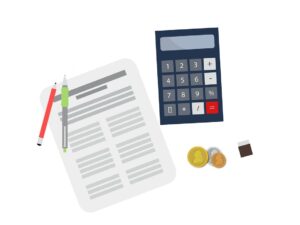By chance, I happened to be in the U.S. when the news of Luka Dončić’s unexpected trade broke. Regardless of where you were in the world, it’s hard to imagine you missed hearing about the three-way deal that left NBA fans in complete shock.
The five-time NBA All-Star Luka Dončić joined the Los Angeles Lakers after being quickly traded by the Dallas Mavericks in a huge three-way deal. Three teams- the Dallas Mavericks, L.A. Lakers and Utah Jazz- completed a three-team trade.
One of the main issues arising from the three-way trade regarding Luka Dončić is that he was due to an upcoming potential supermax contract extension. In other words, he was eligible for a supermax contract extension from the Mavericks. After being traded, the player is no longer eligible to receive the supermax extension.
So, how do you get a supermax contract? The NBA supermax eligibility is based on two main components. First, only a player that has at least seven years of experience in the NBA by the end of his current contract is eligible to sign a supermax contract extension, offered by the team that drafted him or acquired his rookie contract by a trade. Secondly, a player must meet one of the following performance criteria: be named to an All-NBA team (first, second or third, 15 players per season) in the most recent season or two in the last three seasons; be named Defensive Player of the Year in the most recent season or two in the last three seasons; or be named MVP in any of the three previous seasons.
The legal basis
When it comes down to trade systems and types of contracts, the truth is that understanding how it works can be quite challenging at times. There are indeed some complicated aspects to the trade system based on the NBA Collective Bargaining Agreement.
The CBA represents a legal contract between the league and the players association laying down rules by which the league functions. For example, this document defines the salary cap, minimum and maximum salary levels, trade rules, the NBA draft procedure as well as prevents the league from breaching federal antitrust laws since certain practices could violate the laws if they weren’t agreed through a collective bargaining agreement. You get the point.
First things first, it is important to understand the salary cap concept. In the past, NBA teams were able to sit on open salary-cap space rather than spending it on free agents, but this is no longer the case under the novel NBA Collective Bargaining Agreement (CBA). Simply put, the previous version of the CBA didn’t prescribe any penalties for failing to reach the salary floor by the first day of the season, yet the new version is different.
What is a salary cap?
A salary cap refers to a limit on the amount NBA teams can spend on contracts. It is used to level the playing field; without having a salary cap concept set in place, teams with more money could just outspend other teams in the league and acquire better players.
The salary cap can change from year to year under particular conditions and circumstances. The NBA has a soft cap because there are several prescribed exceptions under the CBA that allow going over the salary cap. In contrast, a hard cap cannot be exceeded at all.
Therefore, a team cannot exceed the salary cap because of the team signing or acquiring player contracts unless it is eligible to use exceptions such as the ‘Bird’ exception, the ‘Early Bird’ exception, the Rookie Scale exception, the Disabled Player exception, the Traded Player exception and others.
What is the ‘Bird’ exception?
The ‘Bird’ or the ‘Larry Bird’ exception enables teams to exceed the cap to re-sign their own free agents, up to a maximum salary. To be eligible for this exception, a player must play for three seasons without clearing waivers or changing teams (or two seasons to be eligible for ‘Early Bird’ rights).
We have mentioned there are some complicated aspects of the system so check this out- when a player is traded, his new team inherits his Bird rights. For example, an athlete signs a three-year contract but plays two and a half seasons with that team. After being traded at the deadline in the third season to a new team, the new teams get full ‘Bird’ rights. Basically, this means that when a player is traded, his ‘Bird’ rights are transferred as well.
Explaining trades
Long story short, trades must comply with the salary cap rules, meaning that the salaries of the players involved in the trade cannot exceed prescribed limits. All trades must be approved by the NBA before becoming official.
If a team is exceeding the salary cap, then an exception might be used. An exception refers to a mechanism that enables a certain team to conduct trades or sign players by going over the prescribed cap. For example, they can use the Traded Player exception, the Disabled Player exception or the Minimum Salary exception.
Trades include at least two teams; theoretically, the maximum number equals the number of teams in the league. Each team must send out and take back at least one of the following: a player under contract, a future draft pick, the draft rights to an NBA prospect or a certain amount of money. An NBA prospect refers to a player with a reasonable chance of becoming an NBA player during his career or a contributing player in a professional league.
Therefore, in the case of a three-team trade, each team must send at least one of the following: an active player contract, a certain amount of money, or the draft right to an NBA prospect.
How does a three-team trade happen?
Following initial discussions by representatives of three parties and agreeing on the trade framework, they must set up a trade call with the league. During the trade call, the league office and the teams must establish the exact terms of the trade, contract details for each traded player, health and insurance information as well as each team’s responsibilities. The league needs to review the trades to ensure they are compliant with all NBA rules such as salary cap requirements and trade exceptions.
Following the call, each team submits to the league the terms of the transaction, and the league office replies with requirements for conditions that must be satisfied before the trades can be officially announced such as the need for the players to pass their physical exams. A player must be notified no later than one hour after the trade call and no less than one hour before the official announcement.
When the league approves the trade, the teams can publicly announce the trade. Players must report to their new times within 48 hours of receiving the notice of an in-season trade or within one week in the off-season.
The EuroLeague’s transfer system
Trades between clubs are subject to specific regulations and deadlines. As prescribed by the 2024-25 Turkish Airlines EuroLeague Bylaws, during the same season, a player registered in the competition may only transfer once to another EuroLeague club prior to Round 27 of the Regular Season until Wednesday at 18:00 CET on the week of the caledar date for the game in question (should the round be played on Tuesday/Wednesday, the deadline shall be Monday at 18:00 CET).
A player registered in the EuroLeague can transfer to another EuroLeague club only once during the season, provided that the transfer occurs before Round 27 and the player was deregistered before Round 18. If a player is deregistered after Round 18, they cannot join another EuroLeague club for the rest of the season.
Secondly, players must be deregistered by their old club before registering with the new club. During the competition, the clubs are required to communicate all player transactions, stating whether a player’s release is temporary (for example, due to a minor injury) or permanent. This must be communicated the same day it occurs. A player who has not been active due to an injury may be added to the roster after the deadline to register players.
Finally, the EuroLeague bylaws state that a player cannot be traded without their consent. Therefore, a player in the EuroLeague has a say in changing clubs.
What do the Bylaws say about registration rules?
According to Chapter III, the clubs must register their members through the EuroLeague Basketball registration platform and provide the necessary documentation at least 3 weeks before Round 1.
One week before the first Regular Season game, clubs must submit the registration documents through the registration platform. Any addition or change in the roster after the registration documents have been completed one week before the start of the season will be computed within the maximum number of players allowed during the entire season.
As mentioned above, during the Regular Season, player additions to the team roster can be made up to and including Round 27.
For rounds where games are in the calendar on Tuesday/Wednesday the deadline is Monday at 18:00 CET. For rounds where games are in the calendar on Thursday/Friday the deadline is Wednesday at 18:00 CET. These deadlines refer to the arrival of the documentation at the EuroLeague Basketball office.
Is there a salary cap?
The EuroLeague introduced the 2024/2025 Financial Fair Play Regulations as a piece of regulation that ties players’ remuneration levels to collective business performance. The implementation of the Competitive Balance Standards (CBS) has been approved to extend the scope of the current Financial Stability & Fair Play Regulations (FSFPR), which were first introduced in the 2014/2015 season.
Starting from the 2024/2025 season, the EuroLeague has introduced a salary cap system, which will be fully implemented by the 2027/2028 season. The newly introduced salary cap system is based on three main levels- the low salary level, the base salary level and the high salary level.
While the salary cap system resembles the NBA’s salary cap system, it is tailored to the finance of European basketball. Its main objective is to align salary levels with club revenues and ensure competitive balance as well as deter financial malpractices.
Note: This text does not constitute legal advice but represents the personal opinion of the author.



